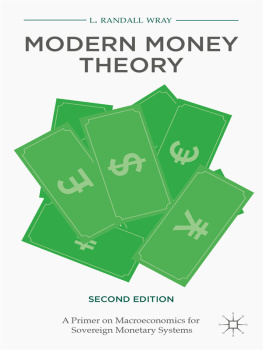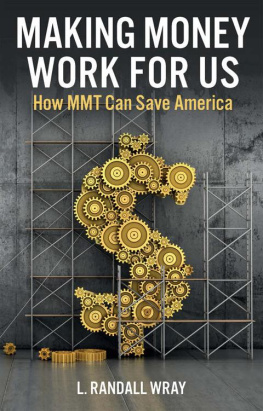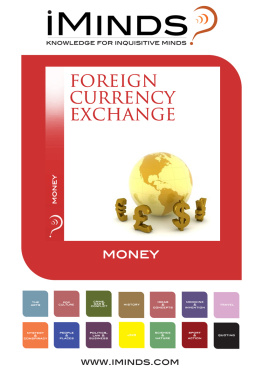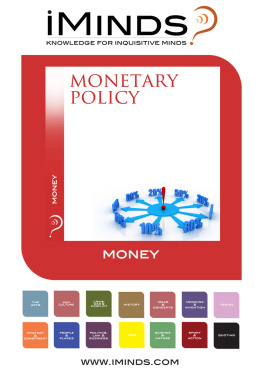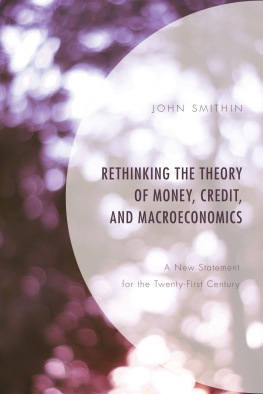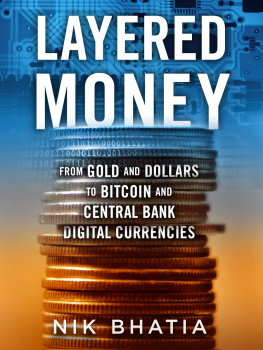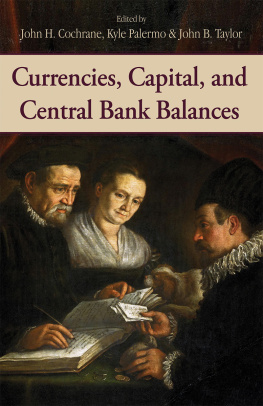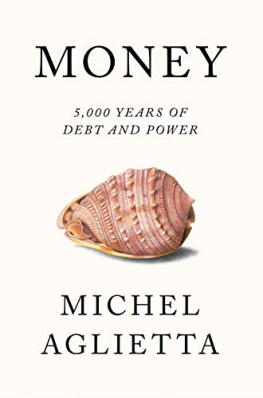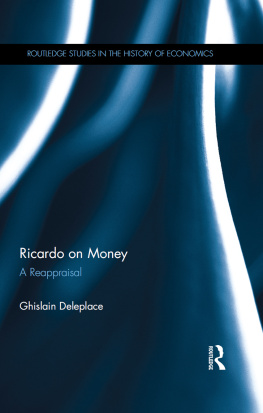Modern Money Theory
Modern Money Theory
A Primer on Macroeconomics for Sovereign Monetary Systems
2nd edition
L. Randall Wray
Senior Scholar, Levy Economics Institute of Bard College,
University of Missouri-Kansas City, USA


L. Randall Wray 2012, 2015
All rights reserved. No reproduction, copy or transmission of this publication may be made without written permission.
No portion of this publication may be reproduced, copied or transmitted save with written permission or in accordance with the provisions of the Copyright, Designs and Patents Act 1988, or under the terms of any license permitting limited copying issued by the Copyright Licensing Agency, Saffron House, 610 Kirby Street, London EC1N 8TS.
Any person who does any unauthorized act in relation to this publication may be liable to criminal prosecution and civil claims for damages.
The author has asserted his right to be identified as the author of this work in accordance with the Copyright, Designs and Patents Act 1988.
First edition published 2012
Second edition published 2015 by
PALGRAVE MACMILLAN
Palgrave Macmillan in the UK is an imprint of Macmillan Publishers Limited, registered in England, company number 785998, of Houndmills, Basingstoke, Hampshire RG21 6XS.
Palgrave Macmillan in the US is a division of St Martins Press LLC, 175 Fifth Avenue, New York, NY 10010.
Palgrave Macmillan is the global academic imprint of the above companies and has companies and representatives throughout the world.
Palgrave and Macmillan are registered trademarks in the United States, the United Kingdom, Europe and other countries.
ISBN: 9781137539915 Hardback
ISBN: 9781137539908 Paperback
This book is printed on paper suitable for recycling and made from fully managed and sustained forest sources. Logging, pulping and manufacturing processes are expected to conform to the environmental regulations of the country of origin.
A catalogue record for this book is available from the British Library.
Library of Congress Cataloging-in-Publication Data
Wray, L. Randall, 1953
Modern money theory : a primer on macroeconomics for sovereign monetary / L. Randall Wray, University of Missouri-Kansas City, US. 2nd edition.
pages cm
Revised edition of the authors Modern money theory, 2012.
Includes bibliographical references and index.
ISBN 9781137539908
1. Monetary policy. 2. Fiscal policy. 3. Macroeconomics. I. Title.
HG230.3.W73 2015
339.53dc23 2015018349
Contents
List of Figures
Preface to the Second Edition
In recent years an approach to macroeconomics has been developed that is called modern money theory (MMT). The components of the theory are not new, but the integration toward a coherent analysis is. My first attempt at a synthesis was in my 1998 book, Understanding Modern Money. That book traced the history of money as well as the history of thought undergirding the approach. It also presented the theory and examined both fiscal and monetary policy from the modern money point of view. Since that time, great strides have been made in applications of the theory to developing an understanding of the operational details involved.
This book is a substantially revised version of the Modern Money Theory Primer first published in 2012. The purposes of the revision are to take account of comments on the earlier edition and of developments of the approach over the past few years; to extend the analysis in various directions (inflation, taxes, the crisis in Euroland, exchange rates, trade, and developing economies); and to improve the exposition in some chapters (Introduction, Conclusion).
Since the first edition was published, MMT has received a lot of attention in the press, on the internet, and even in popular political movements. Warren Mosler had long predicted, adapting an aphorism attributed to Arthur Schopenhauer, that MMT would go through three phases: First, it is ridiculed. Second, it is violently opposed. Third, it is accepted as being self-evident. Many of the tenets of MMT have already entered the third stage with former critics now claiming they knew it all along.
The findings have been reported in a large number of academic publications. In addition, the growth of the blogosphere has spread the ideas around the world. Modern money theory is now widely recognized as a coherent alternative to conventional views. However, academic articles and short blogs do not provide the proper venue for a comprehensive introduction to the approach.
This Primer seeks to fill the gap between formal presentations in the academic journals and the informal blogs. It will provide the reader with the basics to build to a reasonably sophisticated understanding. We begin with a quick overview: what is MMT and why does it matter? We then introduce the reader to the basics of macroeconomic accounting, paying particular attention to stocks, flows, and balance sheets. The main text presents ideas clearly and simply, with more wonky bits placed in technical boxes. We then move on to building an understanding of the way that money works in a sovereign nation.
The most surprising result for most readers will be that sovereign governments are not like households or firms when it comes to money! While we are told all the time that prudent governments balance their budgets just like households and firms do the analogy is false. Governments are currency issuers not currency users and if they did act like households, trying to balance their budgets, the economy would suffer. The reader will come to see both monetary and fiscal policy in an entirely new light.
The MMT approach has been criticized for focusing too much on the case of the US, with many critics asserting that it has little or no application to the rest of the worlds nations that do not issue the international reserve currency. To be sure, that criticism is overdone because modern money theorists have applied the approach to a number of other countries, including Australia, Canada, Mexico, Brazil, and China. Still, much of the literature explicitly addresses the case of developed nations that operate with floating exchange rates. Some supporters have even argued that MMT cannot be applied to fixed exchange rate regimes. This Primer fills that gap it explicitly addresses alternative exchange rate regimes as well as the situation in developing nations (that often peg their currencies). In that sense it is a generalization of modern money theory.
Unlike my 1998 book, this Primer does not detail the history of money or the history of thought. The exposition will remain largely theoretical, although I will provide a few examples, a bit of data, and some discussion of actual real world operations. But for the most part the discussion will remain at the theoretical level. The theory, however, is not difficult. It builds from simple macro identities to basic macroeconomics. It is designed to be accessible to those with little background in economics. Further, the Primer mostly avoids criticism of the conventional approach to economics; there are many critiques already, so this Primer aims instead to make a positive contribution. That helps to keep the exposition relatively short. Where appropriate, there will be boxes that provide slightly more technical discussions and case studies. In addition, boxes will provide answers to frequently asked questions. The material in boxes can be skipped by readers in a hurry. Alternatively, the reader can return to the boxes after completing each chapter.
Next page
